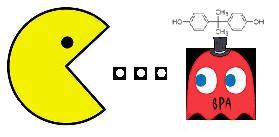Team:Caltech
From 2011.igem.org
|
Project |
Hi! We are the Caltech 2011 iGEM Team. We are interested in bioremediation of endocrine disruptors or organic pollutants :) EDCs (Endocrine Disrupting Chemicals) are substances which detrimentally effect the development and reproduction of wild organisms. To remedy that, the Caltech iGEM team hopes to engineer bacteria which can sense and degrade DDT, estrogen, bisphenol A, and nonylphenol to less toxic forms. Compared to more traditional forms of pollution removal, bioremediation would be relatively cheaper and less disruptive to the environment. However, a successful project must make sure that the bacteria used for remediation do not act as pollutants or introduce toxic byproducts into the environment. Multiple pathways for degradation are being explored. We hope to optimize previously established degradation pathways for DDT and BPA as well as search for novel pathways for all four chemicals. Prior research has indicated that there exist proteins can degrade DDT; however, these are poorly characterized and have not been successfully introduced into E. coli. Luckily, enzymes and constructs which degrade BPA have established functionality in E. coli and are in the parts registry. We base our experiment upon these results by searching for new genes in river bacteria that can degrade endocrine disruptors and exploring the abilities of the their genes.
|
 "
"


